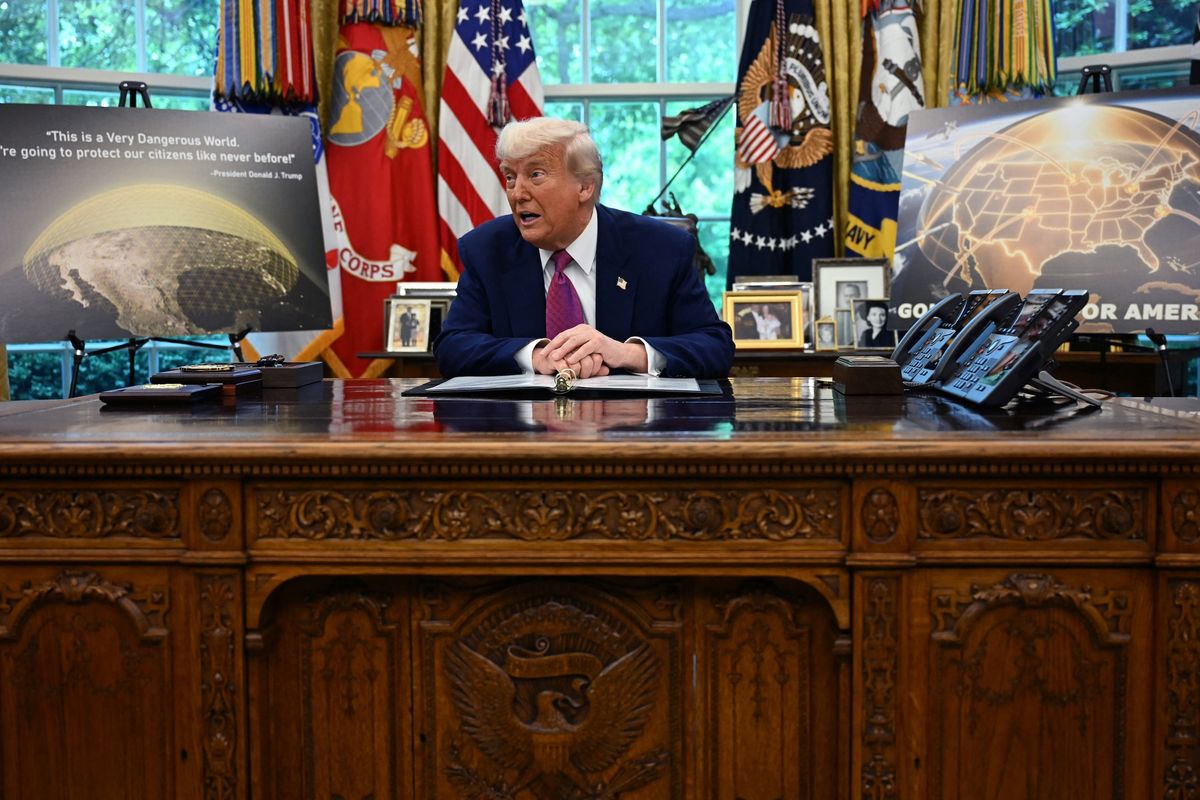In the past, space was dominated by the Soviet Union and the United States. Today, however, space has become a vital part of all our lives, economies, and national defense systems. Satellites now crowd our orbit with vital communications, global positioning (GPS) networks, and imaging platforms. At the same time, improved technology and cost-cutting techniques have allowed other countries, as well as private spaceflight companies like SpaceX, to join the U.S. and Russia in orbit. This new age of commercialization and exploration offers many opportunities, however, it also presents the U.S. and other countries with unique security dilemmas. The Cipher Brief spoke with Todd Harrison, Director of the Aerospace Security Project at the Center for International and Strategic Studies (CSIS), to explore this new dynamic, the threats it poses, and the opportunities it opens for American space security.
The Cipher Brief: Why is space important to U.S. policy, especially in the national security realm, and how does the proliferation of international and private actors complicate that policy?
Todd Harrison: Space is particularly important because our military strategy calls for us to play an away game, so we need global power projection forces. When you’re operating forces over long distances, you need support systems that can also operate over long distances, and that’s what space does for the U.S. military. It enables us to communicate anywhere in the world, see anywhere in the world, listen anywhere in the world, but also to navigate and coordinate timing anywhere in the world. Those are some of the unique capabilities that space systems provide for the military, and the military is increasingly reliant on these space-based capabilities for its operations in a variety of different types of conflict.
Space is also economically important because civilian space capabilities now play a significant role in our economy and international trade. As a society, we are getting more and more dependent on space. If you consider for a second, without GPS, whole companies and industries – like Uber and Lyft – just wouldn’t be possible. That’s why it’s an important part of U.S. public policy, because these are assets that we have to manage carefully, these are assets that we are strategically dependent on, and space is also a realm that is still growing and emerging, and the rules of the road have not yet been fully written.
That’s why it’s important for U.S. policymakers to consider everything that’s going on in space, and what we need to do to help shape the future.
TCB: As you say, it’s still emerging and it’s getting much more crowded out there. Space used to just be the United States and Russia, but now you have other state-level actors and a lot of private actors like SpaceX. How does that complicate or help U.S. policy?
TH: It helps U.S. policy because it means that, as more and more other countries become increasingly dependent on space like we are, then they’re going to have the same incentives to be responsible stewards and users of space. So it’s not just us anymore, it’s an international problem, where all countries and many private companies have a complex web of interdependencies in space. That can help be a stabilizing force for the future.
Where it can be a problem is that, as more countries and companies have access to space, it creates the risk of rogue actors, people who don’t follow norms of behavior that we think are prudent – or refuse to respect that there are any norms in space. That is a big risk right now, because there’s no clear consensus in the international community about what the norms should be.
TCB: And since space plays such a necessary function in U.S. defense, it becomes a field of war in its own right, correct? That leads to the question of what space-based threats are out there. How can we deter those threats?
TH: There’s a whole range of threats to space systems, but a lot of people immediately think of kinetic antisatellite weapons – things that blow up in space – and that’s certainly a threat. But the much more likely types of threats that we’re going to see, and are seeing already, are non-kinetic threats. Things like jammers, which disrupt the signals to and from satellites – if you can’t communicate with your satellite, you have effectively lost it – and lasers that can damage or degrade or blind satellites. High powered laser systems can even cause components to overheat on a satellite. There’s also the risk of co-orbital threats: satellites that can maneuver into the same orbit as another satellite and interfere with them through close-in jamming and microwave attacks, or even attach themselves to the satellite to interfere with it in a number of ways.
There is a whole range of threats that we have to be concerned about, and what’s also challenging is that, for some of these threats, attribution can be very difficult. Jamming, for example, is very difficult to pinpoint, especially if the jamming signal is coming from a third-party country, where the jammer may be located without that country’s knowledge. It could be a mobile jammer, or an intermittent jammer, or operating in a noisy environment where you can’t easily distinguish it from other legitimate emitters that are around it.
So if attribution is difficult, that makes deterrence almost impossible. If someone can attack you without leaving any fingerprints, how do you deter them from doing that?
TCB: If you can’t deter, what can you do to protect space systems?
TH: If you think about deterrence as an equation, to effectively deter an adversary from doing something, their perceived cost needs to be greater than their perceived benefit. So what you can do is you can make it harder for them to attack you in order to raise the cost. You can also reduce the benefit of them attacking you.
In space, there are several ways you could do this. Right now, for many of our military systems, we buy very expensive satellites that have a lot of capabilities aggregated onto them, and we buy them in small quantities. What that means is each of those satellites is a big juicy target for an adversary. Without much cost, they can attack one or two satellites and get a big benefit out of that attack. So one of the things we could do is to break up those satellites, and instead of having a small number of very large capable satellites, we have a large number of smaller, less capable satellites that can do the same mission. Instead of attacking one satellite, they would have to attack dozens. This is far more resilient, because if you have a constellation of several dozen satellites, this probably means that you have a production line of these satellites and can replace them more easily. Whereas, with our big Battlestar Galactica-type satellites, you build a constellation of four or five and then you’re done, you don’t have a production line any more. To replace that big satellite might be a three or five-year proposition.
TCB: And it could also black out part of your network?
TH: It could, and in some cases where you rely on inter-satellite links, it could break the circle so that you don’t have continuous satellite links around the globe. Even taking out one or two satellites can have a disproportionate effect on the overall capabilities of the constellation.
TCB: Is this a place where the private sector can really help out? Developing smaller satellites at a cheaper cost?
TH: Yes. That’s one of the things that the Defense Department has been looking at is where does it make sense to disaggregate or disperse our military capabilities to larger numbers of small satellites? I think there are opportunities here for innovative companies in the private sector to come in with new ideas for constellations or how to do some of the same missions in a different way.
Here’s a real world example: The military has its own constellation of satellites to do what they call narrow band communications. These are voice communications – like satellite phones – at low data rates. They just launched a new constellation to do this called MUOS, which is a constellation of five satellites in geostationary orbit. Well the nearest commercial equivalent is something like Irridium. Irridium is a constellation of 66 satellites in low earth orbit. And it’s not an exact one-to-one replacement in terms of capabilities but the two systems provide similar services. Iridium is a good example of an alternative architecture that is inherently more resilient because to effectively attack that system, you have to attack many more satellites.
TCB: In your mind, looking at the new Trump administration’s policies, how much recognition do you see of these issues? How do their plans look?
TH: That’s where we have a big question mark. We haven’t heard the Trump administration say much about space policy. Where they have talked about it, it’s been more focused on civil space and leveraging the advances that are happening in commercial space, particularly in the launch industry.
But in military space, we haven’t heard a lot of details. This is one of the areas where there’s still some white space in the administration’s policies, they haven’t committed themselves to one thing or the other, so they can still color in what they want their policy to be.
And the Hillary Clinton campaign, to be fair, also said just about as much about military space, which is very little.
TCB: There has been talk of plans to build offensive military space systems in the Trump administration, what do you think about that?
TH: It could be destabilizing, but this isn’t necessarily new. In the Reagan administration and the George H. W. Bush administration, we did pursue some things that I think most people would consider weaponization of space.
It is something that has been visited in the past, and I think back in the 80s and the early 90s, the technology just simply wasn’t that mature. It wasn’t feasible at the time. Technology has advanced quite a bit since then, and it is not impossible to imagine fielding space-based weapons of various types today.
So I think this does raise the question anew: Is this something that the U.S. can or should pursue, and what would that do to the balance of power in space? Could it lead to an arms race? The other question is whether we pursue weapons in space. If the costs are coming down, could some other country pursue them, and what should we do to prevent that?
TCB: If you were a space policy advisor to Trump, what are some first steps you would suggest?
TH: The first thing I would do is put the Air Force on a new path to develop next generation space systems for two particular missions: protected communications and missile warning. I would put them on a path to developing new systems for both those areas that are fundamentally different from what they’ve been buying in the past. Instead of a small number of small satellites in geosynchronous orbit, I would push them to adopt a more resilient architecture of a large number of small satellites, probably in low earth orbit.
I would start that right away. The timing is right, and we now know enough about what we want and need.










